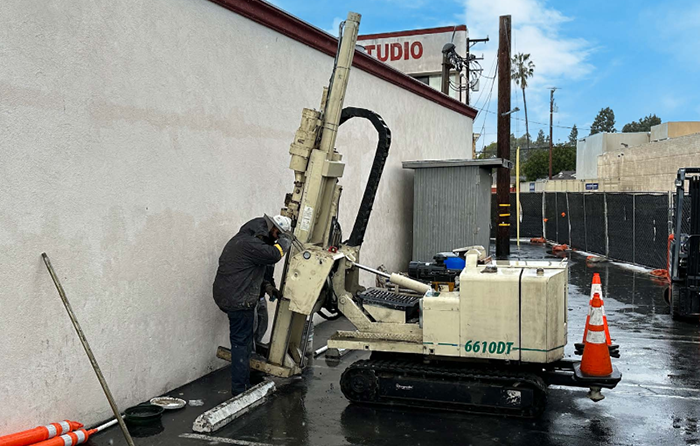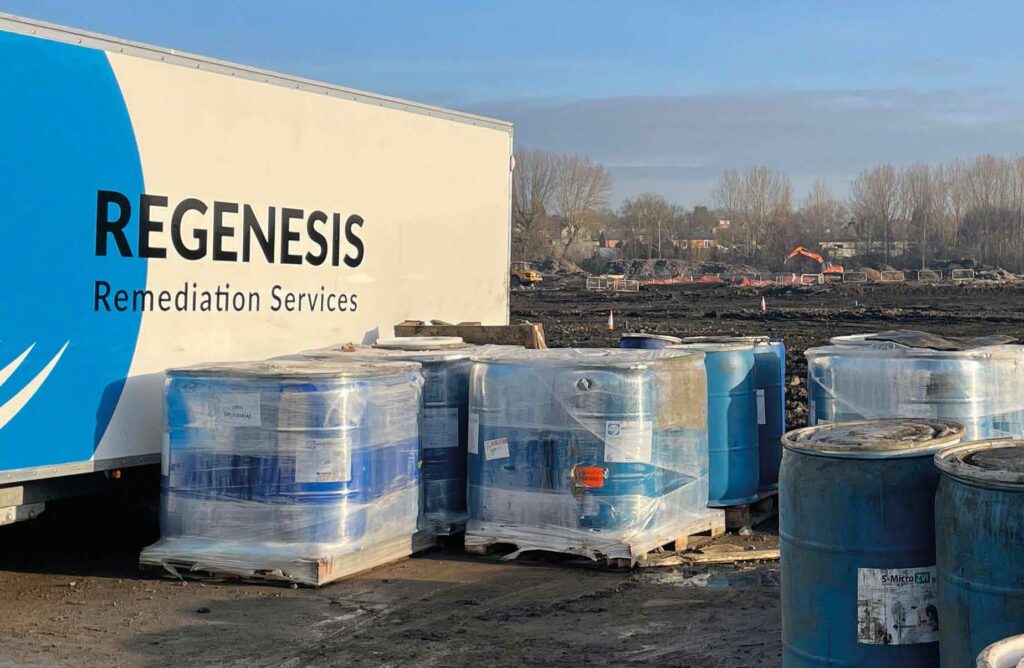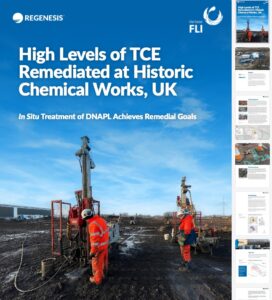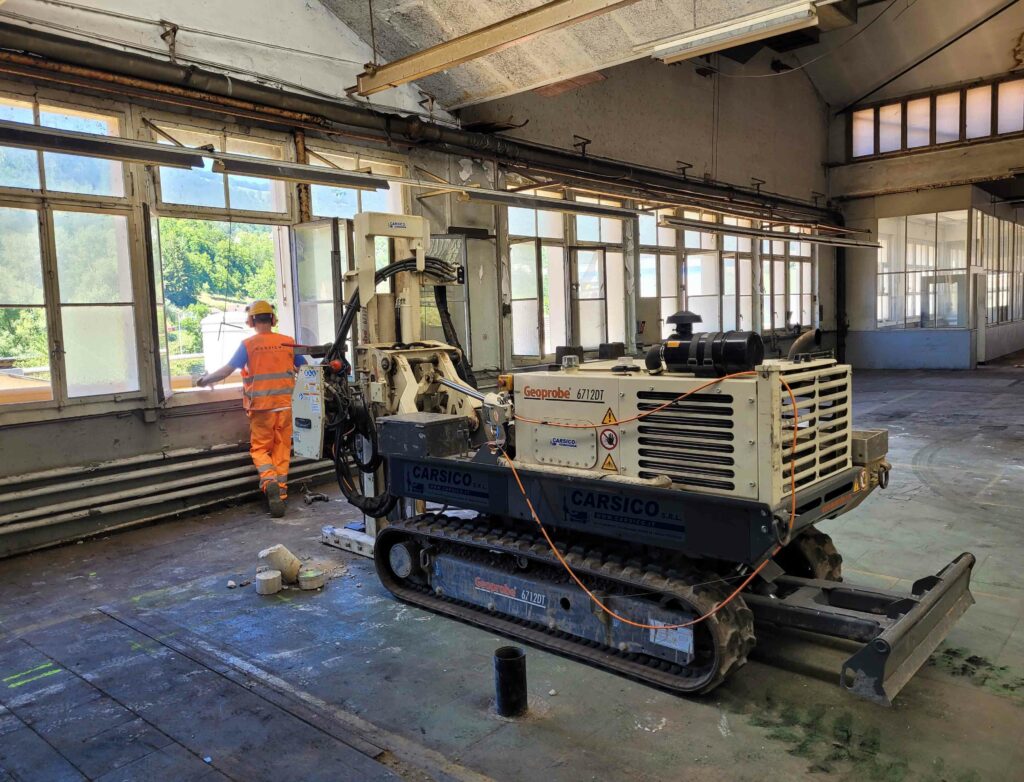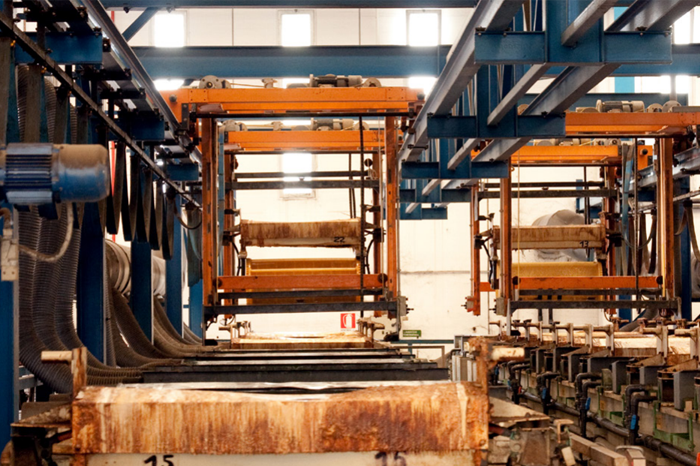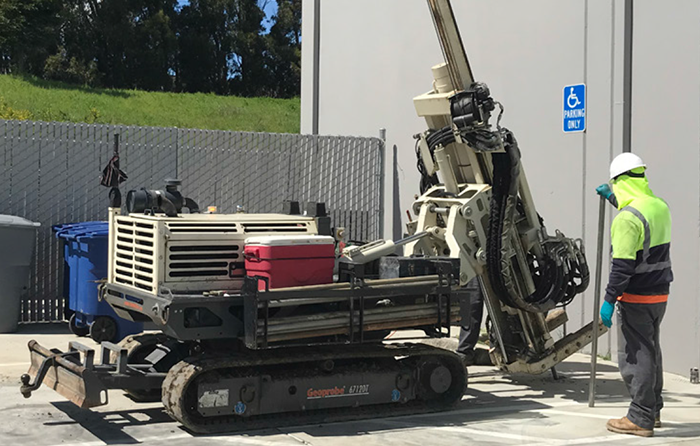Rapid Elimination of Chlorinated Solvents
Case Study Highlights:
-
Combined approach using 3 REGENESIS remediation products resulted in >99% reduction in CVOC concentrations
-
90% reduction goal achieved within 4 months post-application
-
Ongoing monitoring indicates the continued effectiveness of the treatment, with additional reductions expected in the following months
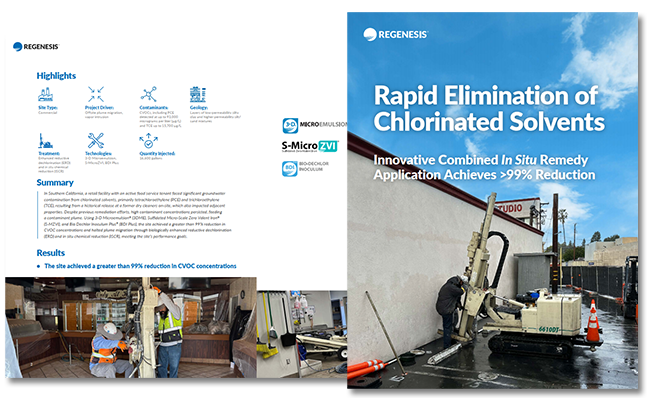
In Southern California, a retail facility with an active food service tenant faced significant groundwater contamination from chlorinated solvents, primarily tetrachloroethylene (PCE) and trichloroethylene (TCE), resulting from a historical release at a former dry cleaners on-site, which also impacted adjacent properties. Despite previous remediation efforts, high contaminant concentrations persisted, feeding a contaminant plume. Using 3-D Microemulsion® (3DME), our sulfidated micron-Scale ZVI : S-MicroZVI® , and Bio Dechlor Inoculum Plus® (BDI Plus), the site achieved a greater than 99% reduction in CVOC concentrations and halted plume migration through biologically enhanced reductive dechlorination (ERD) and in situ chemical reduction (ISCR), meeting the site’s performance goals.
High levels of TCE Remediated at Historic Chemical Works
Award-winning In Situ Remediation of DNAPL Achieves Remedial Goals
Case study highlights:
- Once considered one of the most environmentally contaminated sites in the UK
- REGENESIS designed and delivered a suitable and pragmatic in situ groundwater solution on behalf of Vertase FLI for a portion of the site, fitting in with the wider remediation works and site redevelopment programme.
- Combined ERD and ISCR treatment using S-MicroZVI® and 3-D Microemulsion®
- 90% TCE mass removal achieved in 12 months, exceeded the remedial goal, allowing the site redevelopment to continue apace.
- Multiple lines of evidence show ongoing, long-term reductive dechlorination, without VC stall.
- Winner of the Brownfield Award 2024 ‘Best Application of Remediation Technologies‘
Or watch the 5-min project video with site footage and interviews
Effective In-Situ Treatment of a 1km PCE Plume in Finland
Case study highlights:
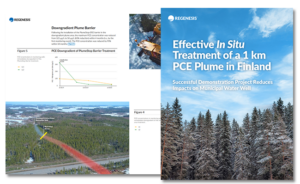 In Eastern Finland, a fast-moving PCE (perchloroethene) plume beneath a metal-processing facility was remediated to reduce impacts on a municipal drinking water source.
In Eastern Finland, a fast-moving PCE (perchloroethene) plume beneath a metal-processing facility was remediated to reduce impacts on a municipal drinking water source.
- PCE concentrations were reduced to below the drinking water limit at the municipal water supply well (concentration reductions of approximately 80% in the plume within months and 90 to 95% by 18 months)
- Results indicate that the combined treatment approach can be successfully applied in cold groundwater aquifers with low organic carbon content
- Integrated source area grid treatment (ERD) and plume barrier treatment (PlumeStop®) is an effective strategy for treating elongated chlorinated solvent plumes
In Situ Reduction of Hexavalent Chromium in Switzerland
Timely remediation of a former component factory in Northern Switzerland
At a former precision component manufacturing facility in northern Switzerland, hexavalent chromium contamination was found in the underlying soil and groundwater.
The challenge for Environmental Consultant CSD Ingénieurs was to find an effective remediation solution that allows business activities to continue, keeps costs low and avoids the demolition of historic buildings. Read the case study to learn how this puzzle was solved with the help of our products and services.
Read the case study
4m 17s reading time
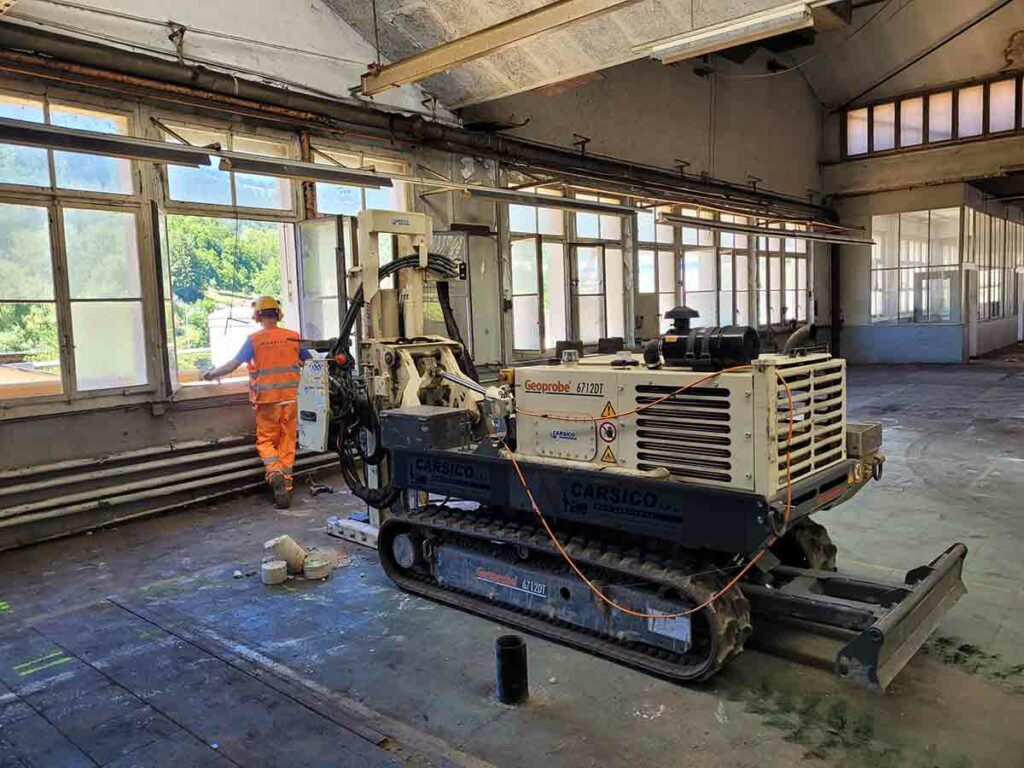
In Situ Treatment of Hexavalent Chromium Results in Site Closure
Case study highlights:
This case study focuses on the successful remediation of hexavalent chromium (Cr(VI)) contamination at a chrome plating facility in the Midwest of North America. Decades of ineffective pump & treat (P&T) operations led to the need for a cost-effective and rapid solution to achieve regulatory closure.
- Commodity ZVI and 3-D Microemulsion/CRS rapidly reduced Cr(VI) concentrations, achieving remarkable reductions within months.
- S-MicroZVI® and 3-D Microemulsion offered improved distribution and reactivity, addressing previous limitations in the remediation process.
- The use of S-MicroZVI® and 3-D Microemulsion led to a rapid 99% reduction in Cr(VI) concentrations, securing regulatory closure for a long-standing contamination case.
2m 55s reading time
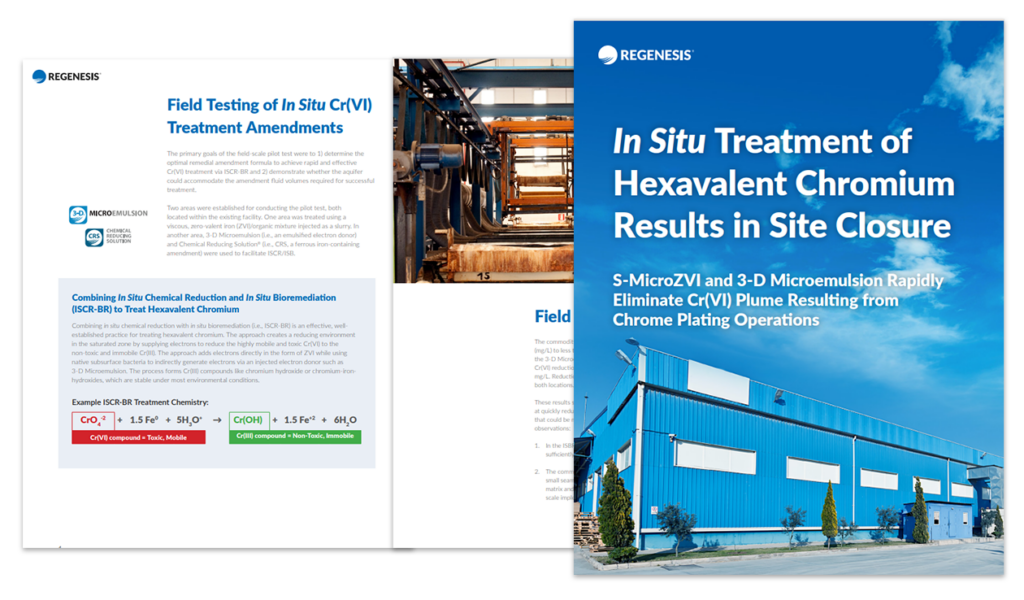
In Situ Chlorinated Solvent Treatment Protects Municipal Pumping Station
Remediation of a former dry cleaner site in Värnamo, Sweden
In situ remediation of groundwater impacted with high levels Tetrachloroethene (PCE) was completed at a former dry cleaning site, as the temporary installed groundwater recirculation system proved too expensive to run as a permanent solution. RGS Nordic carried out soil remediation using muliphase extraction and worked with REGENESIS to provide a remediation solution for the groundwater plume. Read the case study to find out about the remedial design, application and the results.
Highlights
- Example of a sustainable solution as no further operation cost or energy use required and it produced no waste for disposal
- Enhanced Reductive Dechlorination using a mix of REGENESIS electron donors delivers reduction in total chlorinated solvents of 99.6%
- 8 years of monitoring data shows no rebound in parent or daughter contaminant concentrations
- Downstream municipal pumping station is now protected from further contaminant ingress without the need for a protective pump & treat system
2m 39s reading time

Achieving site closure for a large PCE plume in urban area
This case study reviews a former dry cleaner site in a town in Indiana, USA, where site regulatory closure was achieved after a large dissolved-phase PCE groundwater plume was successfully treated using PlumeStop, enhanced reductive dechlorination (ERD) amendments and S-MicroZVI from REGENESIS. Patriot Engineering, a leading environmental consulting firm, specified ERD as the most practical and economically viable method to effectively treat the large plume.
Patriot’s strategy to achieve closure was to significantly reduce the PCE plume and then to demonstrate plume stability through post-remediation monitoring. By combining remediation technologies from REGENESIS with a highly efficient and cost-effective remediation design, Patriot’s treatment approach eliminated the PCE plume. Subsequent performance monitoring and analysis completed by Patriot demonstrated plume stability, earning the site a No Further Action status from the state regulator.

Case study highlights:
- Closure achieved for a large chlorinated solvent plume in an urban area
- A challenging site: located in an urban area with access limitations
- PCE sources rapidly eliminated and plume efficiently treated using a suite of REGENESIS in situ remediation technologies
11m 14s reading time
Cost-effective In Situ Remediation of Chlorinated Solvents in Svenljunga, Sweden
Cost-effective In Situ Remediation of Chlorinated Solvents in Svenljunga, Sweden
In situ remediation of groundwater impacted with Trichloroethylene (TCE) was completed at a former fur factory in Svenljunga, Sweden, as it had been determined that excavation or thermal treatment would have been too expensive. A targeted application of 3-D Microemulsion® was performed using direct push technology (DPT) to complete the injections. Validation sampling showed that the concentrations in the groundwater and soils had been reduced by approx. 95%, to well below the remedial targets.
2m 31s reading time
About the Remediation Technology
3-D Microemulsion (3DME) is an engineered electron-donor emulsion that offers a steady and long-term source of staged-release hydrogen (in the order of 4 to 5 years from a single application) to enhance the reductive dechlorination (ERD) of chlorinated compounds. It has been optimized to distribute widely upon injection, allowing for high volume applications, reducing the number of injection points and events required onsite. Click the logo to learn more about how 3DME works.
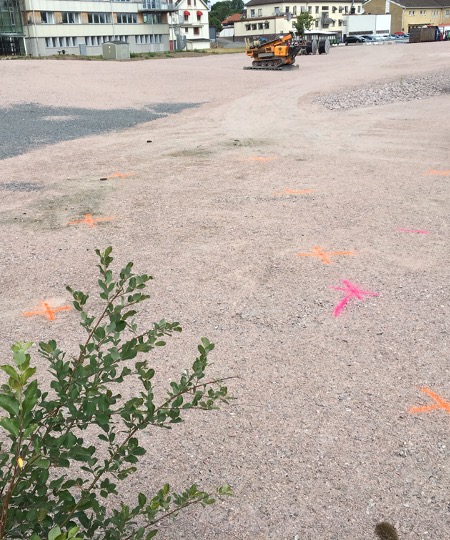
225m Permeable Reactive Barrier Treats TCE and Chromium (VI)
Sustainable and cost-effective remediation of a co-mingled plume in a sensitive chalk aquifer
A 48 hectare site in the UK was to be redeveloped for mixed commercial and residential use. The existing site included a mix of historic and existing industrial land use, including a metal plating works, surrounded by agricultural land and residential housing. The Mott MacDonald engaged early with REGENESIS regarding potential options for remediation.
Case Study Highlights:
- A large-scale remediation project with challenging conditions: geology, underground services, ongoing site use and multiple stakeholders
- Treatment of a co-mingled chromium (VI) and TCE plume via enhanced biological dechlorination and chemical reduction, using: S-MicroZVI,
3-D Microemulsion and BDI Plus - Pilot study proves appropriateness of the proposed in situ remedial solution, allowing regulatory sign off for the full scale works.
- Post remediation monitoring results to date show significant chromium reduction and TCE below detection limits
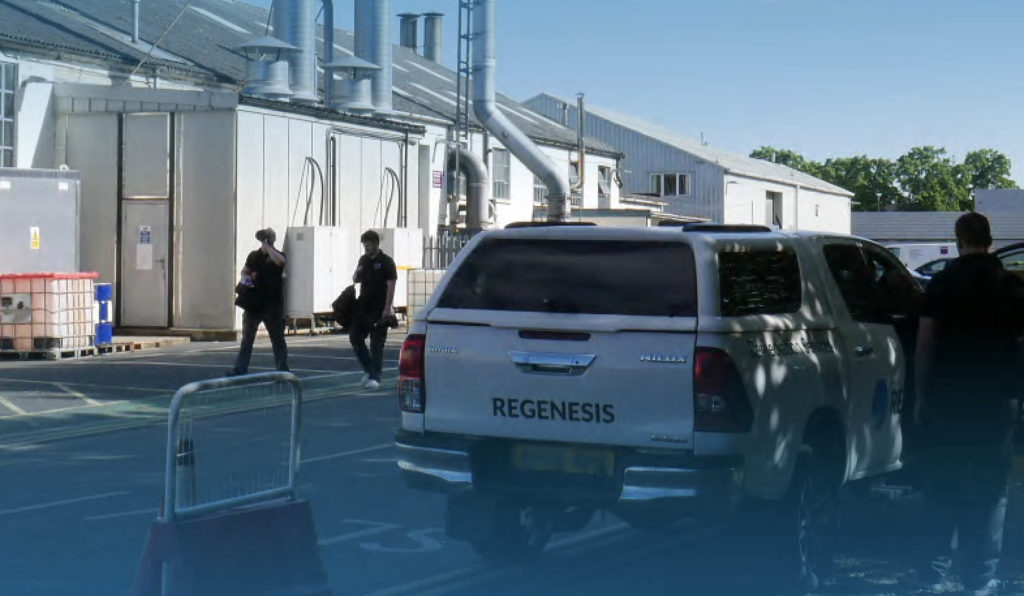
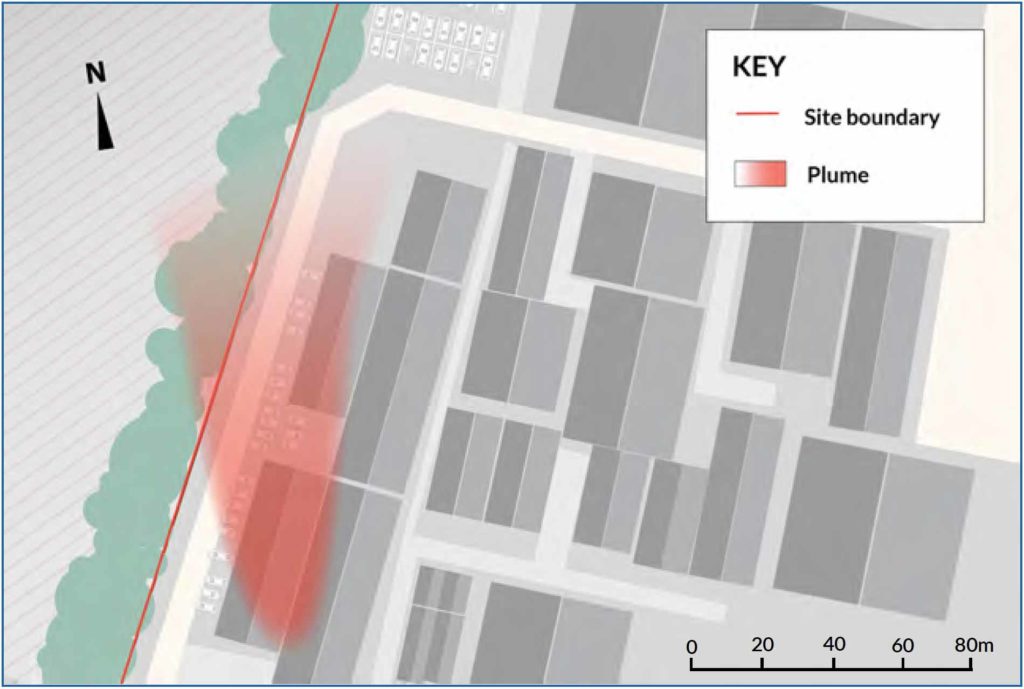
98% PCE Reduction Achieved After 16 Months
The site is a former dry-cleaning supply distribution business that operated from 1957 to 2000. The former facility provided laundry chemicals, including detergents and spotting chemicals, packaging products such as hangers and polyethylene bags, and bulk deliveries of tetrachloroethene (PCE). Remediation at the site was completed in two primary phases. The first phase was a targeted excavation and soil mixing event focused on addressing the highly impacted shallow soils and smear zone. The second phase was focused on treating the groundwater PCE plume onsite and preventing further plume migration offsite.
Case study highlights:
- High PCE concentrations were detected in soil and groundwater during a site investigation
- A pragmatic, phased approach was used to target PCE in soil and groundwater
- The multi-component treatment was immediately effective and has maintained 98% PCE reduction in onsite groundwater
4m 23s reading time


 Americas
Americas Europe
Europe Français
Français Deutsch
Deutsch Italiano
Italiano Español
Español